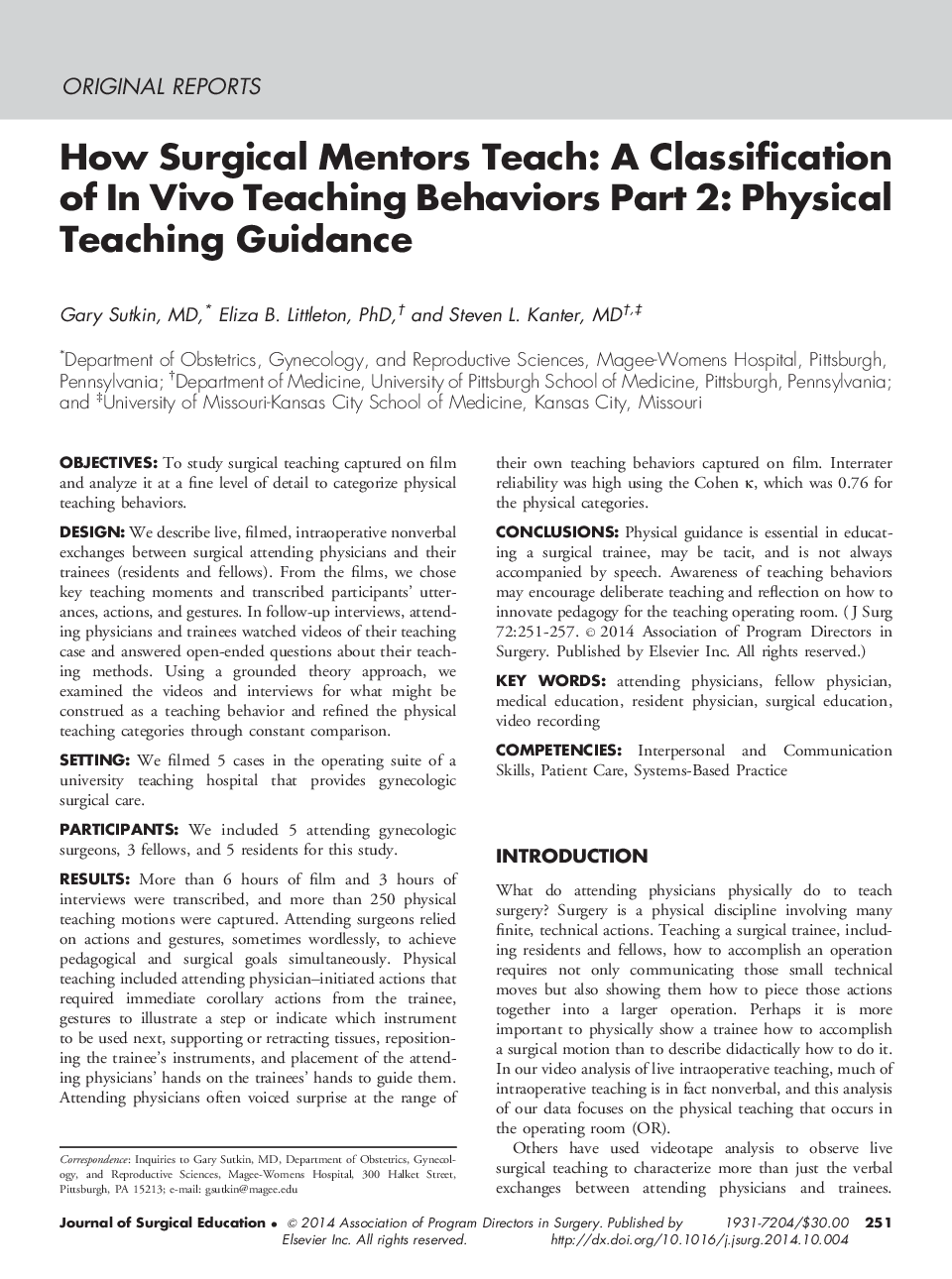| کد مقاله | کد نشریه | سال انتشار | مقاله انگلیسی | نسخه تمام متن |
|---|---|---|---|---|
| 4297663 | 1288327 | 2015 | 7 صفحه PDF | دانلود رایگان |
ObjectivesTo study surgical teaching captured on film and analyze it at a fine level of detail to categorize physical teaching behaviors.DesignWe describe live, filmed, intraoperative nonverbal exchanges between surgical attending physicians and their trainees (residents and fellows). From the films, we chose key teaching moments and transcribed participants’ utterances, actions, and gestures. In follow-up interviews, attending physicians and trainees watched videos of their teaching case and answered open-ended questions about their teaching methods. Using a grounded theory approach, we examined the videos and interviews for what might be construed as a teaching behavior and refined the physical teaching categories through constant comparison.SettingWe filmed 5 cases in the operating suite of a university teaching hospital that provides gynecologic surgical care.ParticipantsWe included 5 attending gynecologic surgeons, 3 fellows, and 5 residents for this study.ResultsMore than 6 hours of film and 3 hours of interviews were transcribed, and more than 250 physical teaching motions were captured. Attending surgeons relied on actions and gestures, sometimes wordlessly, to achieve pedagogical and surgical goals simultaneously. Physical teaching included attending physician–initiated actions that required immediate corollary actions from the trainee, gestures to illustrate a step or indicate which instrument to be used next, supporting or retracting tissues, repositioning the trainee’s instruments, and placement of the attending physicians’ hands on the trainees’ hands to guide them. Attending physicians often voiced surprise at the range of their own teaching behaviors captured on film. Interrater reliability was high using the Cohen κ, which was 0.76 for the physical categories.ConclusionsPhysical guidance is essential in educating a surgical trainee, may be tacit, and is not always accompanied by speech. Awareness of teaching behaviors may encourage deliberate teaching and reflection on how to innovate pedagogy for the teaching operating room.
Journal: Journal of Surgical Education - Volume 72, Issue 2, March–April 2015, Pages 251–257
